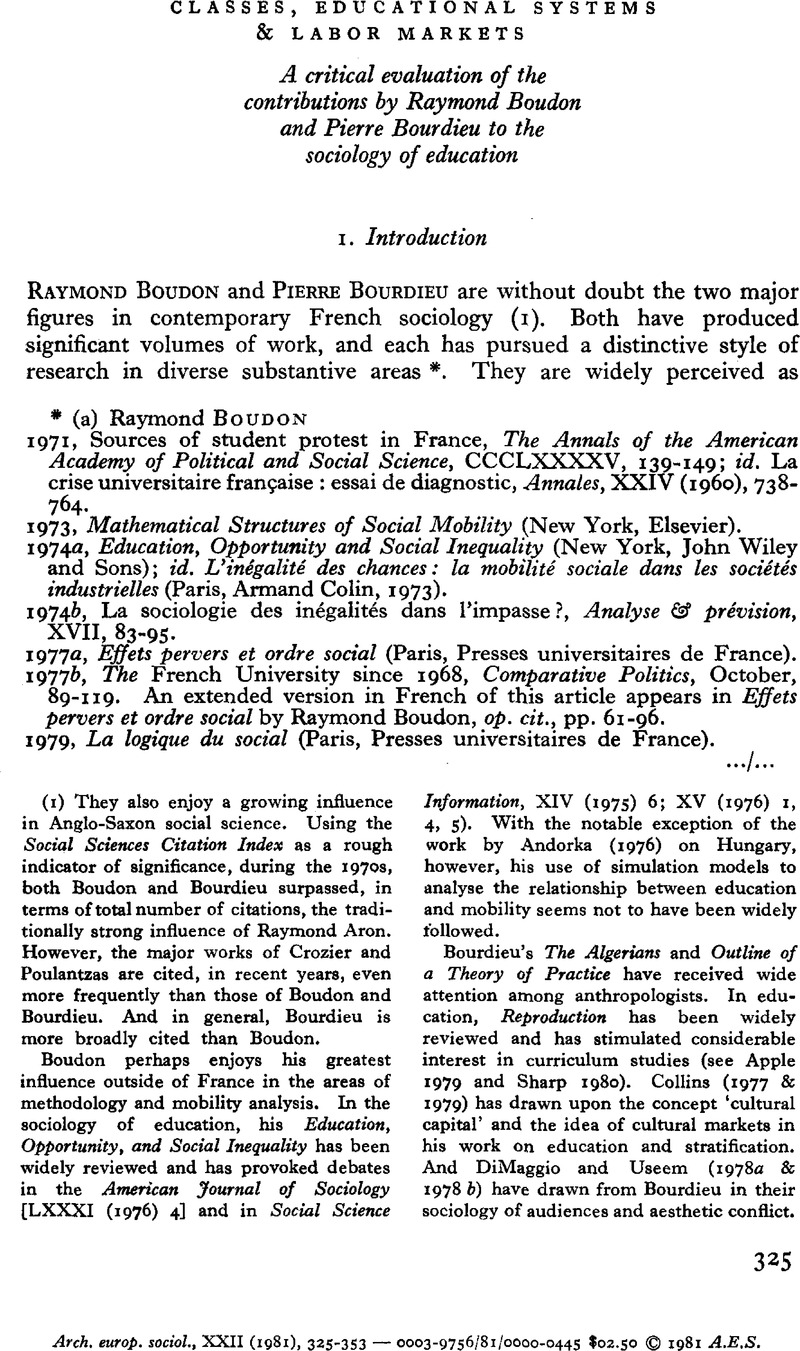Crossref Citations
This article has been cited by the following publications. This list is generated based on data provided by Crossref.
Karabel, Jerome
and
McClelland, Katherine
1987.
Occupational Advantage and the Impact of College Rank on Labor Market Outcomes*.
Sociological Inquiry,
Vol. 57,
Issue. 4,
p.
323.
Andrew, Noyes
2003.
School transfer and social relocation.
International Studies in Sociology of Education,
Vol. 13,
Issue. 3,
p.
261.
2003.
Y a-t-il encore une sociologie ?.
p.
239.
Noyes, Andrew
2004.
Learning landscapes.
British Educational Research Journal,
Vol. 30,
Issue. 1,
p.
27.
Glaesser, Judith
and
Cooper, Barry
2014.
Using Rational Action Theory and Bourdieu’s Habitus Theory Together to Account for Educational Decision-making in England and Germany.
Sociology,
Vol. 48,
Issue. 3,
p.
463.
Donnelly, Susie
2016.
Sins of the father: unravelling moral authority in the Irish Catholic Church.
Irish Journal of Sociology,
Vol. 24,
Issue. 3,
p.
315.
Emmerich, Marcus
and
Hormel, Ulrike
2021.
Unequal Inclusion: The Production of Social Differences in Education Systems.
Social Inclusion,
Vol. 9,
Issue. 3,
p.
301.
L. Swartz, David
2022.
From Paris to Boston: A Trajectory with Pierre Bourdieu.
SOCIOLOGIA E RICERCA SOCIALE,
p.
91.





